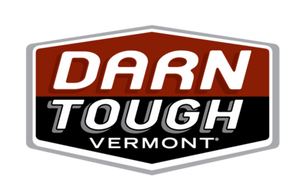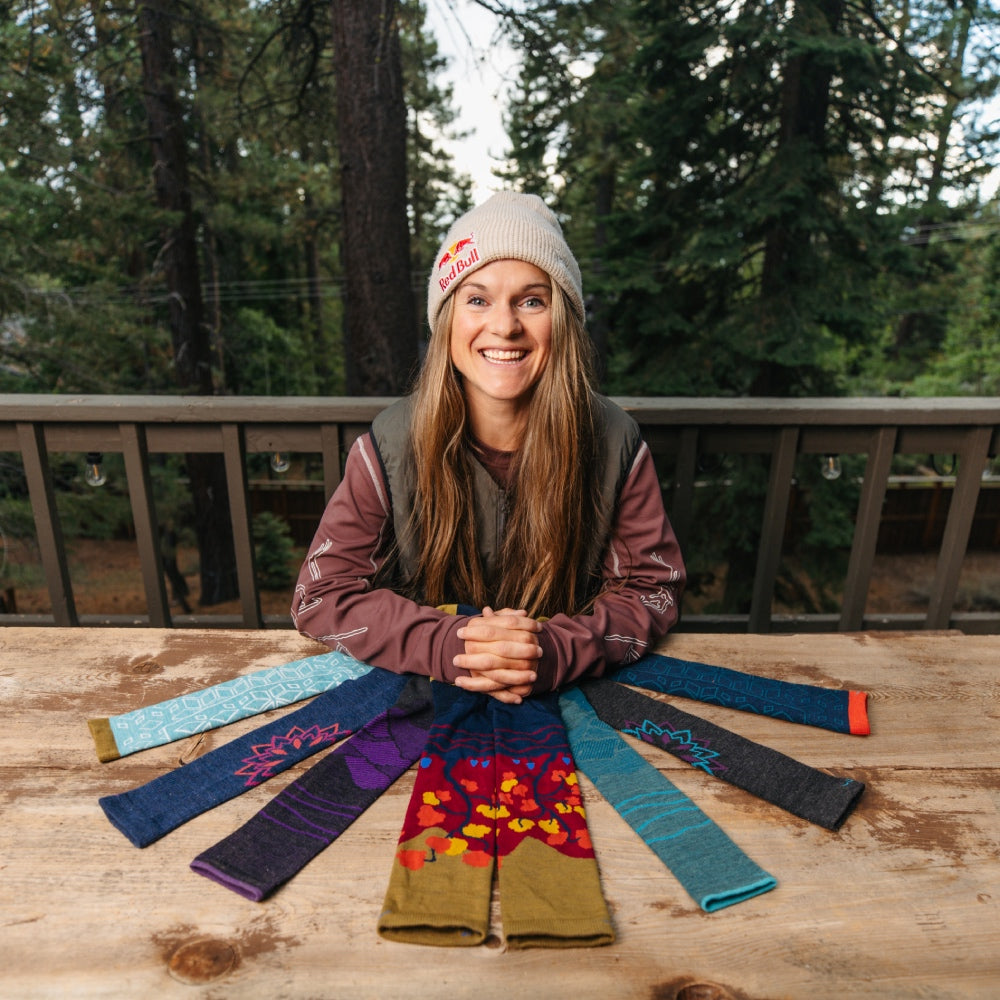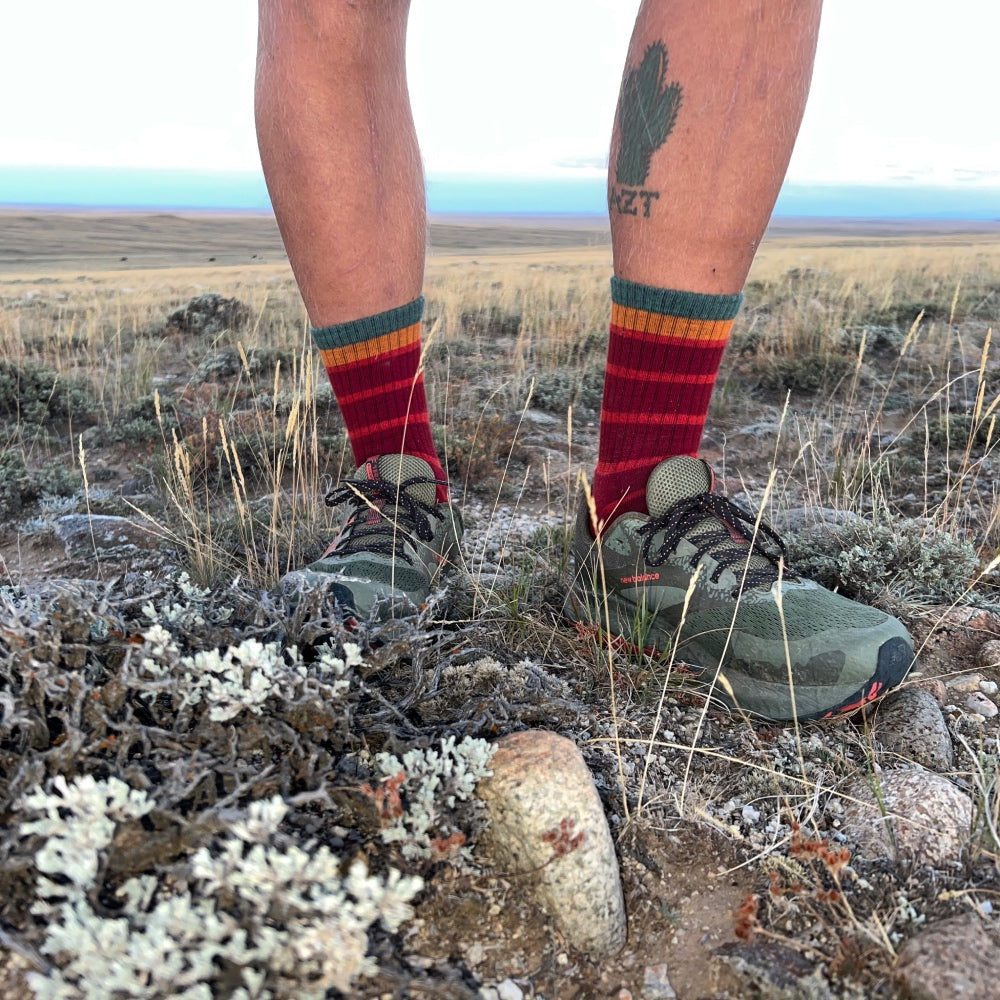A Lifetime Guarantee Starts with Quality at Every Step

Quality was a founding principle at Darn Tough, and we continue to pursue it to the highest degree at every step of the process. Being fully committed to excellence and high standards is how we can back our socks with an Unconditional Lifetime Guarantee.
From the yarn that comes in the door to finished socks that leave the Mill, every employee has a hand in improving the process. We’re going to follow along and tell the story of how quality shapes the socks that you buy for life.
Receiving: In the Door, onto the Testing Bench

The Mill is constantly busy, knitting whole categories of socks ranging from heavyweight hikers to ultralight, no-show runners. That’s part of our advantage in the pursuit of quality: All we make are socks, so there’s fewer distractions on the journey to making the best in the world.
What comes in our receiving doors is mostly Merino Wool yarn, and a lot of it. It shows up in cones, which weigh up to four pounds and contain up to a million feet of yarn. Between the banging of pallet jacks and beeping of truck backup alerts, it can make for a noisy environment. But for Heather Grant, Darn Tough Raw Material Quality Control II, this is where her expertise comes into play. And where the quality process begins.

“We inspect every lot that comes in every day,” says Heather. “And if we find one that is suspect for color, strength, or denier (the weight / thickness of the yarn) then we test it.”
Trust us, Heather knows quality. In her former position at Darn Tough, she would inspect a million socks a year by hand. Now in her role with raw material Quality Control (QC), she has all sorts of scientific tools at her disposal, like a tensile tester. Tensile testing measures the breaking force of Darn Tough raw materials, allowing us to compare the breaking point to our quality standard in Newtons, an internationally-recognized measurement of force.
Durability of a finished sock is tested to the limit with an abrasion tester, an industry-standard process that simulates the natural wear from a human step, by rubbing against a standard abrasive surface with a specified force. QC team will run the abrasion tester until a hole appears.
Quantifiable values from the tensile and abrasion tester, along with other data gathered at this step, let us thoroughly check to see if incoming raw materials are up to our quality standard and the specifications expected from Darn Tough vendors.
Color Reliability Is Quality Also
Every time the product team comes up with a new design, Darn Tough vendors need to develop novel colorways. To backup those amazing designs, Quality Control color standards are developed with our yarn vendors, approved by product development and Quality, and used to inspect incoming yarn for manufacturing consistency.
Here’s where Heather’s teammate Amela Zahirovic, QC Raw Material Lead, steps in. Amala works with the product team to develop the color standard, and leads the charge to verify that standard during incoming QC inspection for color.

Another technical device called a Spectrophotometer comes into play at this stage, providing a highly accurate measurement of the amount of light (in other words, color) reflected from the raw material sample versus the color standard. Next up is a Light Booth called a “Judge,” which helps Amala conduct a visual inspection to discern, for example, a true grey from an imposter.
“Our part in this is making sure the color is on target, strength is on target, the knittability is there, that we’re going to get the bulk production we need,” says Heather. “And from there we’re relying on the quality control — whether it’s the knitters watching the machines and checking the socks, the auditors on the floor checking the socks, or the boarders checking the socks, everybody looks at the socks to see if we find everything.”

Diane Chadderdon, Darn Tough Quality and Continuous Improvement Manager, says the goal of this first phase is to ensure that “what we put into our inventory is perfect before it hits the knitting floor.”
Not That Kind of "Audit:" Getting Set Up to Knit
Just past the din of receiving and the racks of raw material inventory, the knitting floor thrums with action. Rows and rows of Darn Tough’s specialized machines turn out a crazy spectrum of styles, spanning the whole product line. Yet as fancy as the machines are, the people and the quality process are what sets Darn Tough apart.
It begins with the technicians, who set up each knitting machine for a style change. Meanwhile, the quality team maintains a “Golden Sample” for each new style that maintains the standard that needs to be hit for each sock. After the machine is ready to go, and a sample has been run through on the new style, Quality auditors show up to do a three-point check— verifying the golden sample, checking the sizing, and checking all yarns and positions versus the specification sheet for that sock style.

This close-up look covers everything from the yarn cones and tension, to any production defects. Finally, the sock is taken over to a specialized machine shaped like a foot, stretching the sock in 7 critical areas to make sure it’s perfectly aligned with the sizing specifications.
That might sound like a lot. And considering that sock styles or sizes can get changed out on the machines upwards of 30 times a day, it is. But this is how quality is maintained, throughout the process.
“The average company might just make a lot of gray socks,” says Courtney Laggner, Darn Tough Brand & Community Marketing Manager. “Ours have very detailed deigns that just require this level of detail to check. It’s a premium product, and we make sure it’s perfect.”
Continuous Improvement as Source of Pride & Empowerment
The auditors aren’t the only Darn Tough employees keeping an eye on the Quality standard. Part of Diane’s push to continuously improve quality is training everyone involved in manufacturing on the standard, and how to do in-process inspections. Known issues common to certain styles are posted publicly for knitters to check against, and awards are given out for spotting defects.

“We’re very focused on the process, making sure the process is right, the yarns are right, the sock is perfect,” says Courtney. “For us, doing that job every day instills pride in the product. We have thousands of styles, so to be able to identify what’s a marl or a broken needle, what’s on purpose and what’s an issue, you really have to know your stuff.”
The result is that the knitters have the skills to spot a problem. And when they do, they feel empowered to call in an auditor who will check the socks in that lot, quickly and efficiently identifying anything that’s off before it escalates up the chain to finishing — and allowing the knitter to continue working on other socks while the kinks are worked out on the particular machine with an issue.
The Knitting Floor Is a Chance to Check & Check Again
It’s like a magic act, watching a sock being knit. Around the needles go, then up the tube and out it comes, a pretty-near finished sock. At this stage in the knitting process, a third type of audit, called a bucket audit, takes place randomly, providing another measure of ensuring that the quality standard is being met.

In the bucket audit, auditors run another check against the approved checklist for setup and any Quality Control comments that have been shared so knitters can be in the know about issues spotted in that style or machine. The raw materials, the style, the stretch, and flat measurements of socks are all looked at and confirmed. Finally, there’s a visual inspection of the colors, design feel, and stitching and seaming on all sides.
“I think there is a ton of pride in the product — we do our best to put out a product that’s as top notch as possible,” says Courtney. “When socks are returned through warranty, we learn from that. Every single sock is inspected, and we ask, ‘what happened here, how can we make it better?’ So there’s that continuous improvement; it’s the full lifecycle from start to finish.”
Finished to Perfection
From the knitting floor, bins of socks make their way over to the finishing department, and are loaded up into steam dryers, which are programed to add a specific amount of steam that’s dependent on the construction, amount of wool, and other aspects of the sock.
Each type of sock gets its own treatment, which the quality and development teams have collaborated on to perfection. By the time this part is over, the sock has been pre-shrunk, washed, and softened. More than a glorified dryer cycle, Diane explains that getting this part dialed in is critical to providing customers consistent sizing and comfort across the line.

“There’s always ways to do things better, improve process, improve efficiency, and when we see a problem that got out to the customer, we do everything we can to improve our process,” says Diane. “We’ve been working on that down in finishing and boarding, a step in our process where we touch every sock.”
Boarding is an odd name, but the task is no joke. At this stage, the socks have just the right amount of moisture in them to allow a final step which shapes the sock. The boarding team pulls individual socks over a size-specific metal foot form, double checking the toe, the heel, and the height on the form to confirm sizing before the socks head into an oven, where the performance fit is baked in.

“We want to have a visual inspection on every sock that goes out the door,” says Diane. “As the boarding team puts the sock on the form, they are visually inspecting the sock and looking in the mirror as well to see the other side of the sock as it’s passing through. And if they find something, they are empowered to pull it off, put it in the lot to be on alert, on hold, and looked at a higher level as soon as it’s identified.”
Last Checks: Quality Informs Quality at Every Step
Even during boarding, the final stage in the sock manufacturing process, quality is being assessed, sock by sock. Communication between all the teams, from incoming raw material quality control, to knitting, and onto finishing and boarding keeps all Darn Tough employees in the know about potential issues to be on the lookout for, and something that has been improved in the journey toward always improving quality.

“The knitting room can message me about an issue they are seeing,” says Myrissa Fleury, 1st Shift Quality Control Lead. “We put it on our list down here, and when it comes through, our team is able to look it right up, and see if that lot of socks has that issue as well. And if it does, they can audit it and pull it out.”
Alert lists from knitting shows if previous lots were affected, noting the machine number, date added to a list. Before those finished socks go out the door, and problems that are identified are tagged, auditing will either let the lot pass or reject it. “Knitting and finishing are working together to notify each other of what we’re seeing in a lot or work order,” says Myrissa.
Quality Improvement Comes from Empowering Every Employee
Whatever steps you put in place toward ensuring quality, it’s the people that make it work. All Darn Tough employees are trained on the quality standard, with refresher courses and updates as they come along. Even more important, all employees are empowered to make a quality decision if they find a sock that isn’t acceptable.

“The people who work here care,” says Myrissa. “When we changed our quality standard to align with customer feedback, our employees wanted to make sure we were sending out the best possible socks — they see themselves as the face of the brand.”
Ultimately, it’s a partnership. Quality sets the standard, the employees hit the mark, and on the way, they help further the mission of making the best socks possible. From start to finish, everyone’s diligence and input on that quality standard makes it possible to guarantee our socks for life. As Diane summarizes, “We made the perfect sock. We checked it, double checked it, and then triple checked it down in finishing, too.”
As Diane’s title implies, quality isn’t a fixed target. It’s a process that’s continually progressing and the insights comes from the whole company.

“It goes back to the pride thing — ideas can come from anywhere,” says Courtney. “The folks out here doing this job day in and day out know it the best, and they can easily identify an issue, go to Myrissa and say, ‘this is what we’re seeing, what if we did it this way?’ It’s always an open book of improvement.”







